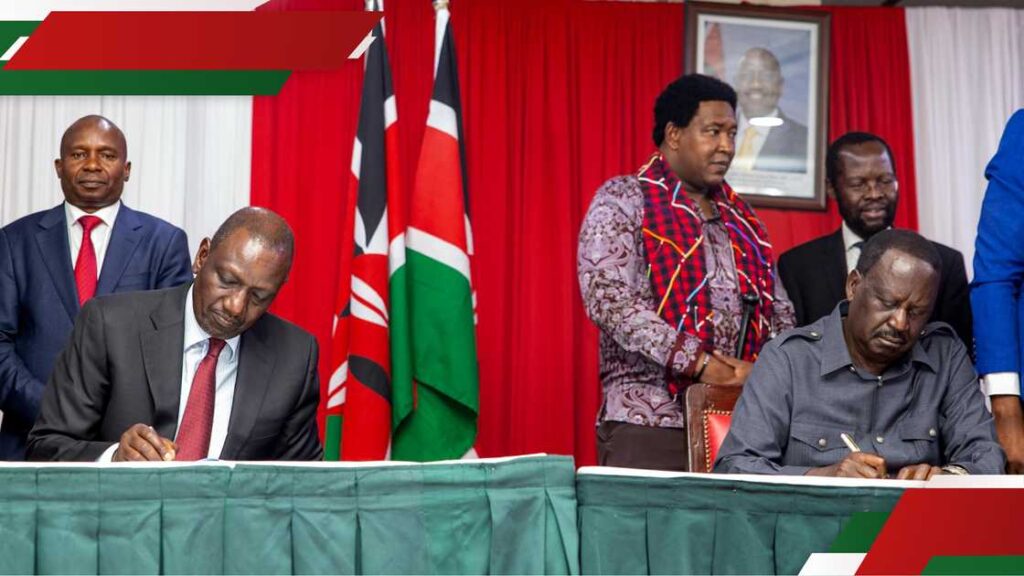Introduction

On 7 March 2025, Kenya saw a historical political development in the form of the ruling United Democratic Alliance (UDA) under the leadership of President William Ruto, and signed an agreement to cooperate on important government policies by the main opposition Orange Democratic Movement (ODM) led by Raila Odinga. The move has given rise to mixed reactions, some admire their ability to unity, while others are afraid that it may weaken opposition inspection.
Major aspect of agreement
The purpose of the UDA-ODM treaty is:
Strengthen bipartisan cooperation for better governance.
Elite the implementation of government policies.
Address electoral and constitutional reforms.
Ensure stability in Parliament by reducing political conflicts.
Potential benefits
Political stability: Low stress can create a better environment for economic growth.
Rapid policy implementation: Less opposition obstacles can lead to better rule.
Taking inclusive decisions: Policies can become more balanced and representative.
Anxiety and criticism
Weak opposition: Some fear ODM will reduce government accountability.
Political betrayal: ODM supporters are worried that their party is giving priority to political gains on advocacy.
Selfishness on National Good: Critics argue that the deal may be more about gaining power than benefiting citizens.
Conclusion
The UDA-ODM agreement is an adventure change in Kenyan politics. Whether it leads to national progress or weakens democracy. Its success depends on how the two sides maintain a balance between cooperation and accountability.



